My
List |
Addition Date
|
Target
|
Mission
|
Instrument
|
Size
|

|
2008-04-16 |
Messier 83
|
Galaxy Evolution Explorer (GALEX)
|
GALEX Telescope
|
2852x2852x3 |

|
-
PIA10374:
-
Ultraviolet Extensions
Full Resolution:
TIFF
(24.4 MB)
JPEG
(1.104 MB)
|

|
2008-04-16 |
Messier 83
|
Galaxy Evolution Explorer (GALEX)
|
GALEX Telescope
Very Large Array (VLA)
|
2852x2852x3 |

|
-
PIA10373:
-
Beyond the Borders of a Galaxy
Full Resolution:
TIFF
(24.4 MB)
JPEG
(975.5 kB)
|

|
2008-04-10 |
Omega Centauri
|
Spitzer Space Telescope
|
IRAC
Multiband Imaging Photometer (MIPS)
|
1400x1400x3 |

|
-
PIA10372:
-
Omega Centauri Looks Radiant in Infrared
Full Resolution:
TIFF
(5.891 MB)
JPEG
(356.3 kB)
|

|
2008-03-27 |
HD 189733b
|
Spitzer Space Telescope
|
|
1514x1499x3 |

|
-
PIA10364:
-
NASA's Spitzer Finds Water Vapor on Hot, Alien Planet (Artist's Concept)
Full Resolution:
TIFF
(6.821 MB)
JPEG
(233.2 kB)
|

|
2008-03-27 |
HD 189733b
|
Hubble Space Telescope
|
NICMOS
|
4000x3000x3 |
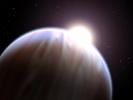
|
-
PIA10363:
-
Astronomers Detect First Organic Molecule on an Exoplanet (Artist's Concept)
Full Resolution:
TIFF
(36 MB)
JPEG
(282.5 kB)
|

|
2008-02-12 |
Abell 1689
|
Hubble Space Telescope
Spitzer Space Telescope
|
Advanced Camera for Surveys
Infrared Array Camera (IRAC)
NICMOS
|
3813x3367x3 |
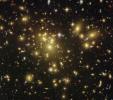
|
-
PIA10237:
-
Astronomers Uncover One of the Youngest and Brightest Galaxies in the Early Universe
Full Resolution:
TIFF
(38.52 MB)
JPEG
(3.231 MB)
|

|
2008-02-11 |
Rho Ophiuchi
|
Spitzer Space Telescope
|
IRAC
|
6020x2905x3 |

|
-
PIA10182:
-
Young Stars in Their Baby Blanket of Dust
Full Resolution:
TIFF
(52.46 MB)
JPEG
(1.065 MB)
|

|
2008-02-11 |
Rho Ophiuchi
|
Spitzer Space Telescope
|
IRAC
Multiband Imaging Photometer (MIPS)
|
6020x2905x3 |
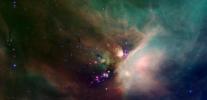
|
-
PIA10181:
-
Young Stars in Their Baby Blanket of Dust
Full Resolution:
TIFF
(52.46 MB)
JPEG
(812 kB)
|

|
2008-01-25 |
Abell 1763
|
Spitzer Space Telescope
|
|
2688x1962x3 |
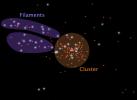
|
-
PIA10227:
-
Celestial Cities and the Roads That Connect Them
Full Resolution:
TIFF
(15.84 MB)
JPEG
(140 kB)
|

|
2008-01-10 |
|
Spitzer Space Telescope
|
|
3000x2400x3 |

|
-
PIA10221:
-
Galaxies of all Shapes Host Black Holes (Artist Concept)
Full Resolution:
TIFF
(21.6 MB)
JPEG
(249 kB)
|

|
2008-01-10 |
NGC 3621
|
Spitzer Space Telescope
|
Infrared Spectrograph (IRS)
|
3000x2400x3 |
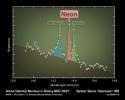
|
-
PIA10220:
-
Slender Galaxy with Robust Black Hole
Full Resolution:
TIFF
(21.6 MB)
JPEG
(326.6 kB)
|

|
2007-12-20 |
Cassiopeia A
|
Spitzer Space Telescope
|
Infrared Spectrograph (IRS)
|
960x960x3 |
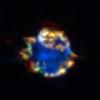
|
-
PIA10206:
-
Cosmic Ornament of Gas and Dust
Full Resolution:
TIFF
(2.769 MB)
JPEG
(33.43 kB)
|

|
2007-12-20 |
Cassiopeia A
|
Spitzer Space Telescope
|
Infrared Spectrograph (IRS)
|
3000x2400x3 |
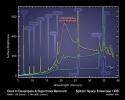
|
-
PIA10207:
-
Dissecting the Wake of a Supernova Explosion
Full Resolution:
TIFF
(21.6 MB)
JPEG
(400.6 kB)
|

|
2007-12-18 |
NGC 4258
|
Spitzer Space Telescope
|
IRAC
|
3000x2501x3 |
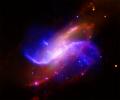
|
-
PIA10204:
-
Anomalous Arms
Full Resolution:
TIFF
(22.51 MB)
JPEG
(238.8 kB)
|

|
2007-12-13 |
M51
|
Galaxy Evolution Explorer (GALEX)
Spitzer Space Telescope
|
IRAC
Ultraviolet/Visible Camera
|
1978x2850x3 |

|
-
PIA10200:
-
A Classic Beauty
Full Resolution:
TIFF
(16.93 MB)
JPEG
(526.5 kB)
|

|
2007-11-29 |
L1157
|
Spitzer Space Telescope
|
IRAC
|
1171x1444x3 |

|
-
PIA10119:
-
Baby Picture of our Solar System

Full Resolution:
TIFF
(5.079 MB)
JPEG
(154.9 kB)
|

|
2007-11-14 |
|
Galaxy Evolution Explorer (GALEX)
|
Ultraviolet/Visible Camera
|
1200x1200x3 |

|
-
PIA10116:
-
NGC 1316
Full Resolution:
TIFF
(4.325 MB)
JPEG
(72.89 kB)
|

|
2007-11-14 |
|
Galaxy Evolution Explorer (GALEX)
|
Ultraviolet/Visible Camera
|
1122x1122x3 |
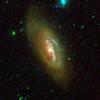
|
-
PIA10115:
-
NGC 4569
Full Resolution:
TIFF
(3.781 MB)
JPEG
(167.7 kB)
|

|
2007-11-14 |
|
Galaxy Evolution Explorer (GALEX)
|
Ultraviolet/Visible Camera
|
1012x1012x3 |
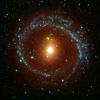
|
-
PIA10114:
-
NGC 1291
Full Resolution:
TIFF
(3.077 MB)
JPEG
(145.5 kB)
|

|
2007-11-14 |
|
Galaxy Evolution Explorer (GALEX)
|
Ultraviolet/Visible Camera
|
1333x1063x3 |
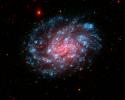
|
-
PIA10113:
-
NGC 300
Full Resolution:
TIFF
(4.255 MB)
JPEG
(131.1 kB)
|

|
2007-11-14 |
|
Galaxy Evolution Explorer (GALEX)
|
|
3000x2400x3 |
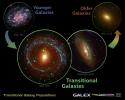
|
-
PIA15656:
-
Portrait of a Galaxy's Life
Full Resolution:
TIFF
(21.6 MB)
JPEG
(569.1 kB)
|

|
2007-11-08 |
HH 46/47
|
Spitzer Space Telescope
|
IRAC
|
2000x1600x3 |
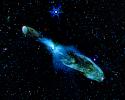
|
-
PIA10111:
-
Bubbly Little Star
Full Resolution:
TIFF
(9.613 MB)
JPEG
(240.8 kB)
|

|
2007-11-06 |
55 Cancri
|
PlanetQuest
|
|
516x290x3 |
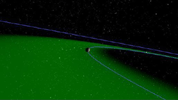
|
-
PIA10109:
-
Journey to a Star Rich with Planets (Artist Concept)

Full Resolution:
TIFF
(449.6 kB)
JPEG
(14.71 kB)
|

|
2007-11-06 |
55 Cancri
|
PlanetQuest
|
|
1280x720x3 |
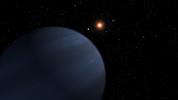
|
-
PIA10108:
-
Plentiful Planetary System (Artist Concept)
Full Resolution:
TIFF
(2.768 MB)
JPEG
(34.45 kB)
|

|
2007-11-06 |
55 Cancri
|
PlanetQuest
|
|
1435x939x3 |

|
-
PIA10107:
-
Our Solar System's Cousin? (Artist Concept)
Full Resolution:
TIFF
(4.05 MB)
JPEG
(78.68 kB)
|

|
2007-11-06 |
55 Cancri
|
PlanetQuest
|
|
720x540x3 |
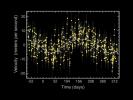
|
-
PIA10106:
-
Wave of a Planet
Full Resolution:
TIFF
(1.168 MB)
JPEG
(52.83 kB)
|

|
2007-10-25 |
|
Spitzer Space Telescope
|
|
3000x2400x3 |
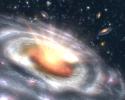
|
-
PIA10093:
-
Bursting with Stars and Black Holes (Artist Concept)
Full Resolution:
TIFF
(21.6 MB)
JPEG
(501.4 kB)
|

|
2007-10-25 |
|
Chandra X-ray Observatory
|
Chandra X-ray Telescope
|
5100x2550x3 |
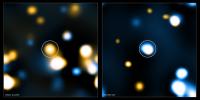
|
-
PIA10092:
-
Stacks of Light
Full Resolution:
TIFF
(39.02 MB)
JPEG
(385.4 kB)
|

|
2007-10-25 |
|
Spitzer Space Telescope
|
MIPS
|
1003x1139x3 |

|
-
PIA10091:
-
Missing Black Holes Found!
Full Resolution:
TIFF
(1.145 MB)
JPEG
(69.72 kB)
|

|
2007-10-22 |
|
Spitzer Space Telescope
|
IRAC
|
2084x2302x3 |

|
-
PIA10087:
-
Wanted: Galactic Thief Who Steals Gas
Full Resolution:
TIFF
(14.41 MB)
JPEG
(236.2 kB)
|

|
2007-10-22 |
|
Spitzer Space Telescope
|
Infrared Spectrometer (IRS)
|
2997x1689x3 |
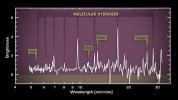
|
-
PIA10086:
-
Cosmic Caper Unfolds in Infrared
Full Resolution:
TIFF
(15.19 MB)
JPEG
(269.1 kB)
|

|
2007-10-09 |
|
Spitzer Space Telescope
|
Infrared Spectrograph (IRS)
|
3000x2400x3 |

|
-
PIA10019:
-
Dust in the Quasar Wind (Artist Concept)
Full Resolution:
TIFF
(21.6 MB)
JPEG
(291.3 kB)
|

|
2007-10-09 |
|
Spitzer Space Telescope
|
Infrared Spectrograph (IRS)
|
2865x1749x3 |
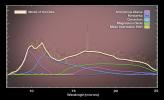
|
-
PIA09932:
-
A Wealth of Dust Grains in Quasar Winds
Full Resolution:
TIFF
(15.03 MB)
JPEG
(288.3 kB)
|

|
2007-10-03 |
|
Spitzer Space Telescope
|
|
3000x2400x3 |
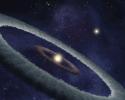
|
-
PIA09931:
-
Birth of an Earth-like Planet (Artist Xoncept)
Full Resolution:
TIFF
(21.6 MB)
JPEG
(281.9 kB)
|

|
2007-09-13 |
|
Spitzer Space Telescope
|
IRAC
|
3300x3300x3 |

|
-
PIA09926:
-
Infrared Coronet Cluster
Full Resolution:
TIFF
(32.67 MB)
JPEG
(583.5 kB)
|

|
2007-09-13 |
|
Spitzer Space Telescope
|
IRAC
Chandra X-ray Telescope
|
3300x3300x3 |
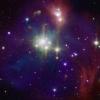
|
-
PIA09925:
-
Coronet: A Star-Formation Neighbor
Full Resolution:
TIFF
(32.67 MB)
JPEG
(407 kB)
|

|
2007-08-29 |
NGC 1333
|
Spitzer Space Telescope
|
|
3200x2400x3 |
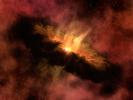
|
-
PIA09967:
-
Water's Early Journey in a Solar System (Artist Concept)
Full Resolution:
TIFF
(23.04 MB)
JPEG
(336.4 kB)
|

|
2007-08-29 |
NGC 1333
|
Spitzer Space Telescope
|
IRAC
|
3000x2400x3 |
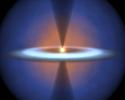
|
-
PIA09966:
-
Steamy Solar System
Full Resolution:
TIFF
(21.6 MB)
JPEG
(167.5 kB)
|

|
2007-08-29 |
NGC 1333
|
Spitzer Space Telescope
|
Infrared Spectrograph (IRS)
|
3000x2400x3 |
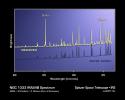
|
-
PIA09965:
-
Spitzer Sees Water Loud and Clear
Full Resolution:
TIFF
(21.6 MB)
JPEG
(987.8 kB)
|

|
2007-08-24 |
Helix Nebula
|
Spitzer Space Telescope
|
IRAC
|
4370x4070x3 |
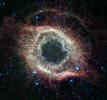
|
-
PIA09962:
-
Spitzer Celebrates Fourth Anniversary with Celestial Fireworks
Full Resolution:
TIFF
(53.36 MB)
JPEG
(2.378 MB)
|

|
2007-08-15 |
Mira
|
Galaxy Evolution Explorer (GALEX)
|
Ultraviolet/Visible Camera
|
1569x1600x3 |

|
-
PIA09961:
-
Mira's Tail There All Along
Full Resolution:
TIFF
(7.544 MB)
JPEG
(471.7 kB)
|

|
2007-08-15 |
Mira
|
Galaxy Evolution Explorer (GALEX)
|
Ultraviolet/Visible Camera
|
717x478x3 |
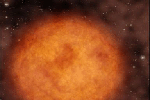
|
-
PIA09960:
-
A Real Shooting Star (Artist Concept)

Full Resolution:
TIFF
(1.03 MB)
JPEG
(26.41 kB)
|

|
2007-08-15 |
Mira
|
Galaxy Evolution Explorer (GALEX)
|
Ultraviolet/Visible Camera
|
1569x800x3 |

|
-
PIA09959:
-
Anatomy of a Shooting Star
Full Resolution:
TIFF
(3.772 MB)
JPEG
(275.3 kB)
|

|
2007-08-15 |
Mira
|
Galaxy Evolution Explorer (GALEX)
|
Ultraviolet/Visible Camera
|
6000x1500x3 |

|
-
PIA09958:
Mira Soars Through the Sky
Full Resolution:
TIFF
(27 MB)
JPEG
(1.115 MB)
|

|
2007-08-06 |
CL0958+4702
|
Spitzer Space Telescope
|
|
3000x2400x3 |
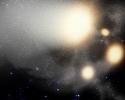
|
-
PIA09957:
-
Galactic Pile-Up (Artist Concept)
Full Resolution:
TIFF
(21.6 MB)
JPEG
(774.2 kB)
|

|
2007-08-06 |
CL0958+4702
|
Spitzer Space Telescope
|
|
3000x2400x3 |
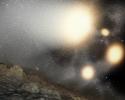
|
-
PIA09956:
-
Fantastic Four Galaxies with Planet (Artist Concept)
Full Resolution:
TIFF
(21.6 MB)
JPEG
(941.8 kB)
|

|
2007-08-06 |
CL0958+4702
|
Spitzer Space Telescope
|
IRAC
|
690x690x3 |
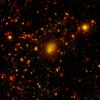
|
-
PIA09955:
-
Fearsome Foursome
Full Resolution:
TIFF
(1.43 MB)
JPEG
(64.28 kB)
|

|
2007-07-24 |
|
Spitzer Space Telescope
|
|
3000x2400x3 |

|
-
PIA09939:
-
Evidence for Strange Stellar Family (Artist Concept)
Full Resolution:
TIFF
(21.6 MB)
JPEG
(256.6 kB)
|

|
2007-07-11 |
HD 189733b
|
Spitzer Space Telescope
|
Infrared Spectrograph (IRS)
|
3000x2136x3 |
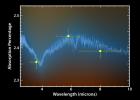
|
-
PIA09715:
-
Exoplanet Forecast: Hot and Wet
Full Resolution:
TIFF
(19.22 MB)
JPEG
(259.2 kB)
|

|
2007-06-20 |
NGC 362
|
Galaxy Evolution Explorer (GALEX)
|
Far-ultraviolet Detector
Near-ultraviolet Detector
|
2250x2550x3 |

|
-
PIA09653:
-
Galaxy Evolution Explorer Spies Band of Stars
Full Resolution:
TIFF
(17.23 MB)
JPEG
(705.7 kB)
|

|
2007-06-13 |
N132D
|
Spitzer Space Telescope
|
Chandra X-ray Telescope
Infrared Array Camera (IRAC)
Multiband Imaging Photometer (MIPS)
|
1806x1200x3 |
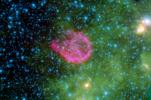
|
-
PIA09604:
-
A Supernova's Shockwaves
Full Resolution:
TIFF
(6.511 MB)
JPEG
(206.6 kB)
|

|
2007-06-01 |
Messier 81
|
Galaxy Evolution Explorer (GALEX)
Hubble Space Telescope
Spitzer Space Telescope
|
GALEX Telescope
Infrared Array Camera (IRAC)
Visible Light
|
3180x2456x3 |
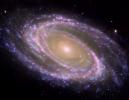
|
-
PIA09579:
-
M81 Galaxy is Pretty in Pink
Full Resolution:
TIFF
(23.43 MB)
JPEG
(1.061 MB)
|

|
2007-05-29 |
|
Spitzer Space Telescope
|
IRAC
|
4097x3557x3 |
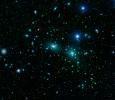
|
-
PIA09561:
-
Dwarfs in Coma Cluster
Full Resolution:
TIFF
(43.72 MB)
JPEG
(1.199 MB)
|

|
2007-05-17 |
Barnard 30
|
Spitzer Space Telescope
|
IRAC
|
3086x1711x3 |
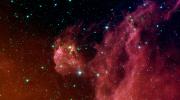
|
-
PIA09412:
-
Young Stars Emerge from Orion's Head
Full Resolution:
TIFF
(15.84 MB)
JPEG
(627.4 kB)
|

|
2007-05-17 |
Barnard 30
|
Spitzer Space Telescope
|
IRAC
Multiband Imaging Photometer (MIPS)
|
3182x1282x3 |
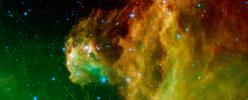
|
-
PIA09411:
-
Young Stars Emerge from Orion's Head
Full Resolution:
TIFF
(12.24 MB)
JPEG
(490.4 kB)
|

|
2007-05-09 |
HD 149026b
|
Spitzer Space Telescope
|
|
638x479x3 |
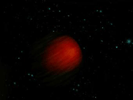
|
-
PIA09378:
-
Blacker than Black (Artist's Concept)

Full Resolution:
TIFF
(918 kB)
JPEG
(12.32 kB)
|

|
2007-05-09 |
HD 189733b
|
Spitzer Space Telescope
|
IRAC
|
640x467x3 |
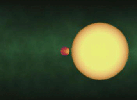
|
-
PIA09377:
-
How to Map a Very Faraway Planet (animation)

Full Resolution:
TIFF
(897.8 kB)
JPEG
(11.68 kB)
|

|
2007-05-09 |
HD 189733b
|
Spitzer Space Telescope
|
IRAC
|
640x473x3 |
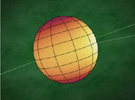
|
-
PIA09376:
-
First Map of Alien World (animation)

Full Resolution:
TIFF
(909.3 kB)
JPEG
(23.38 kB)
|

|
2007-05-01 |
|
Spitzer Space Telescope
|
IRAC
Visible Light
|
2838x948x3 |
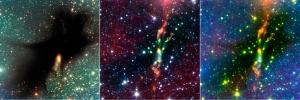
|
-
PIA09338:
-
Spitzer Digs Up Hidden Stars
Full Resolution:
TIFF
(8.071 MB)
JPEG
(398.7 kB)
|

|
2007-05-01 |
|
Galaxy Evolution Explorer (GALEX)
|
GALEX Telescope
|
2250x2550x3 |

|
-
PIA09337:
-
Galaxy Mission Completes Four Star-Studded Years in Space
Full Resolution:
TIFF
(17.23 MB)
JPEG
(590.3 kB)
|

|
2007-04-27 |
Sol (our sun)
|
Solar TErrestrial RElations Observatory (STEREO)
|
SECCHI/Extreme Ultraviolet Imaging Telescope
|
1920x1080x3 |

|
-
PIA09333:
-
Left Limb of North Pole of the Sun, March 20, 2007 (Anaglyph)
Full Resolution:
TIFF
(6.23 MB)
JPEG
(89.44 kB)
|

|
2007-04-27 |
Sol (our sun)
|
Solar TErrestrial RElations Observatory (STEREO)
|
SECCHI/Extreme Ultraviolet Imaging Telescope
|
1920x1080x3 |
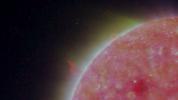
|
-
PIA09332:
-
Left Limb of North Pole of the Sun, March 20, 2007
Full Resolution:
TIFF
(6.23 MB)
JPEG
(84.33 kB)
|

|
2007-04-27 |
Sol (our sun)
|
Solar TErrestrial RElations Observatory (STEREO)
|
SECCHI/Extreme Ultraviolet Imaging Telescope
|
1920x1080x3 |
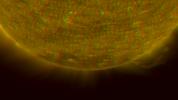
|
-
PIA09331:
-
South Pole of the Sun, March 20, 2007 (Anaglyph)
Full Resolution:
TIFF
(6.23 MB)
JPEG
(114.9 kB)
|

|
2007-04-27 |
Sol (our sun)
|
Solar TErrestrial RElations Observatory (STEREO)
|
SECCHI/Extreme Ultraviolet Imaging Telescope
|
1920x1080x3 |

|
-
PIA09330:
-
South Pole of the Sun, March 20, 2007
Full Resolution:
TIFF
(6.23 MB)
JPEG
(94.62 kB)
|

|
2007-04-27 |
Sol (our sun)
|
Solar TErrestrial RElations Observatory (STEREO)
|
SECCHI/Extreme Ultraviolet Imaging Telescope
|
1920x1080x3 |
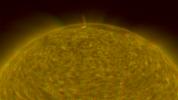
|
-
PIA09329:
-
North Pole of the Sun, March 20, 2007 (Anaglyph)
Full Resolution:
TIFF
(6.23 MB)
JPEG
(126.2 kB)
|

|
2007-04-27 |
Sol (our sun)
|
Solar TErrestrial RElations Observatory (STEREO)
|
SECCHI/Extreme Ultraviolet Imaging Telescope
|
1920x1080x3 |
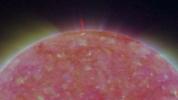
|
-
PIA09328:
-
North Pole of the Sun, March 20, 2007
Full Resolution:
TIFF
(6.23 MB)
JPEG
(94.86 kB)
|

|
2007-04-27 |
Sol (our sun)
|
Solar TErrestrial RElations Observatory (STEREO)
|
SECCHI/Extreme Ultraviolet Imaging Telescope
|
1920x1080x3 |
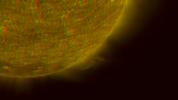
|
-
PIA09327:
-
Right Limb of the South Pole of the Sun, March 18, 2007 (Anaglyph)
Full Resolution:
TIFF
(6.23 MB)
JPEG
(99.1 kB)
|

|
2007-04-27 |
Sol (our sun)
|
Solar TErrestrial RElations Observatory (STEREO)
|
SECCHI/Extreme Ultraviolet Imaging Telescope
|
1920x1080x3 |

|
-
PIA09326:
-
Right Limb of the South Pole of the Sun, March 18, 2007
Full Resolution:
TIFF
(6.23 MB)
JPEG
(85.81 kB)
|

|
2007-04-27 |
Sol (our sun)
|
Solar TErrestrial RElations Observatory (STEREO)
|
SECCHI/Extreme Ultraviolet Imaging Telescope
|
1920x1080x3 |
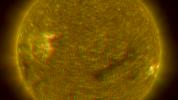
|
-
PIA09325:
-
Closer View of the Equatorial Region of the Sun, March 24, 2007 (Anaglyph)
Full Resolution:
TIFF
(6.23 MB)
JPEG
(169.6 kB)
|

|
2007-04-27 |
Sol (our sun)
|
Solar TErrestrial RElations Observatory (STEREO)
|
SECCHI/Extreme Ultraviolet Imaging Telescope
|
1920x1080x3 |
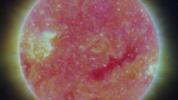
|
-
PIA09324:
-
Closer View of the Equatorial Region of the Sun, March 24, 2007
Full Resolution:
TIFF
(6.23 MB)
JPEG
(129.6 kB)
|

|
2007-04-27 |
Sol (our sun)
|
Solar TErrestrial RElations Observatory (STEREO)
|
SECCHI/Extreme Ultraviolet Imaging Telescope
|
1920x1080x3 |
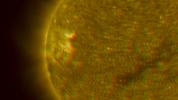
|
-
PIA09323:
-
Close-up View of an Active Region of the Sun, March 23, 2007 (Anaglyph)
Full Resolution:
TIFF
(6.23 MB)
JPEG
(145.6 kB)
|

|
2007-04-27 |
Sol (our sun)
|
Solar TErrestrial RElations Observatory (STEREO)
|
SECCHI/Extreme Ultraviolet Imaging Telescope
|
1920x1080x3 |
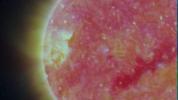
|
-
PIA09322:
-
Close-up View of an Active Region of the Sun, March 23, 2007
Full Resolution:
TIFF
(6.23 MB)
JPEG
(116 kB)
|

|
2007-04-27 |
Sol (our sun)
|
Solar TErrestrial RElations Observatory (STEREO)
|
SECCHI/Extreme Ultraviolet Imaging Telescope
|
1920x1080x3 |

|
-
PIA09321:
-
Full Disk Image of the Sun, March 26, 2007 (Anaglyph)
Full Resolution:
TIFF
(6.23 MB)
JPEG
(91.3 kB)
|

|
2007-04-27 |
Sol (our sun)
|
Solar TErrestrial RElations Observatory (STEREO)
|
SECCHI/Extreme Ultraviolet Imaging Telescope
|
1920x1080x3 |
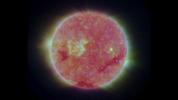
|
-
PIA09320:
-
Full Disk Image of the Sun, March 26, 2007
Full Resolution:
TIFF
(6.23 MB)
JPEG
(110.4 kB)
|

|
2007-04-18 |
Rosette Nebula
|
Spitzer Space Telescope
|
IRAC
|
639x479x3 |

|
-
PIA09268:
-
Infrared Rose

Full Resolution:
TIFF
(919.4 kB)
JPEG
(54.85 kB)
|

|
2007-04-18 |
Rosette Nebula
|
Spitzer Space Telescope
|
IRAC
|
1669x1439x3 |

|
-
PIA09267:
-
Every Rose has a Thorn
Full Resolution:
TIFF
(7.217 MB)
JPEG
(286.2 kB)
|

|
2007-04-18 |
Rosette Nebula
|
Spitzer Space Telescope
|
|
3300x2400x3 |
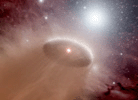
|
-
PIA09266:
-
Highway to the Danger Zone (Artist Concept)

Full Resolution:
TIFF
(23.76 MB)
JPEG
(244.6 kB)
|

|
2007-04-16 |
Pleiades
|
Spitzer Space Telescope
|
IRAC
Multiband Imaging Photometer (MIPS)
|
2855x2855x3 |
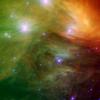
|
-
PIA09263:
-
The Seven Sisters Pose for Spitzer
Full Resolution:
TIFF
(24.45 MB)
JPEG
(779.5 kB)
|

|
2007-04-16 |
Pleiades
|
Spitzer Space Telescope
|
IRAC
|
2855x2855x3 |
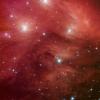
|
-
PIA09262:
-
Pink Pleiades
Full Resolution:
TIFF
(24.45 MB)
JPEG
(980.3 kB)
|

|
2007-03-29 |
|
Spitzer Space Telescope
|
|
3000x2400x3 |
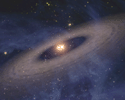
|
-
PIA09229:
-
Two Suns Raise Family of Planetary Bodies (Artist Animation)

Full Resolution:
TIFF
(21.6 MB)
JPEG
(309.2 kB)
|

|
2007-03-29 |
|
Spitzer Space Telescope
|
|
3000x2000x3 |

|
-
PIA09228:
-
Alien Sunset (Artist Concept)
Full Resolution:
TIFF
(18 MB)
JPEG
(239.4 kB)
|

|
2007-03-29 |
|
Spitzer Space Telescope
|
IRAC
|
3000x2400x3 |
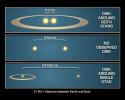
|
-
PIA09227:
-
Where Planets Take up Residence
Full Resolution:
TIFF
(21.6 MB)
JPEG
(348.8 kB)
|

|
2007-03-07 |
Z Camelopardalis
|
Galaxy Evolution Explorer (GALEX)
|
|
720x487x3 |
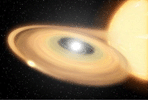
|
-
PIA09221:
-
Explosions - Large and Small (Artist Concept)

Full Resolution:
TIFF
(1.053 MB)
JPEG
(34.97 kB)
|

|
2007-03-07 |
Z Camelopardalis
|
Galaxy Evolution Explorer (GALEX)
|
Far-ultraviolet Detector
Near-ultraviolet Detector
|
1800x1800x3 |

|
-
PIA09220:
-
Scene of Multiple Explosions

Full Resolution:
TIFF
(9.735 MB)
JPEG
(851.7 kB)
|

|
2007-03-07 |
Z Camelopardalis
|
Galaxy Evolution Explorer (GALEX)
|
Far-ultraviolet Detector
|
1800x1800x3 |

|
-
PIA09219:
-
Ghostly Remnant of an Explosive Past

Full Resolution:
TIFF
(9.735 MB)
JPEG
(153.7 kB)
|

|
2007-02-21 |
|
Spitzer Space Telescope
|
|
3000x2400x3 |

|
-
PIA09200:
-
Exotic Atmospheres
(Artist Concept)

Full Resolution:
TIFF
(21.6 MB)
JPEG
(257.1 kB)
|

|
2007-02-21 |
|
Spitzer Space Telescope
|
Infrared Spectrograph (IRS)
|
3000x2400x3 |

|
-
PIA09199:
-
Cracking the Code of Faraway Worlds
Full Resolution:
TIFF
(21.6 MB)
JPEG
(354 kB)
|

|
2007-02-21 |
|
Spitzer Space Telescope
|
Infrared Spectrograph (IRS)
|
3000x2400x3 |

|
-
PIA09198:
-
Cracking the Code of Faraway Worlds
Full Resolution:
TIFF
(21.6 MB)
JPEG
(484.3 kB)
|

|
2007-02-21 |
|
Spitzer Space Telescope
|
Infrared Spectrograph (IRS)
|
3000x2400x3 |

|
-
PIA09197:
-
Cracking the Code of Faraway Worlds
Full Resolution:
TIFF
(21.6 MB)
JPEG
(399.2 kB)
|

|
2007-02-21 |
|
Spitzer Space Telescope
|
|
3000x2400x3 |
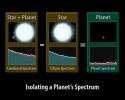
|
-
PIA09196:
-
How to Pluck a Spectrum from a Planet
Full Resolution:
TIFF
(21.6 MB)
JPEG
(298.3 kB)
|

|
2007-02-13 |
|
Hubble Space Telescope
|
WFPC2
|
1241x1207x3 |

|
-
PIA09194:
-
The Colorful Demise of a Sun-like Star
Full Resolution:
TIFF
(4.499 MB)
JPEG
(153.6 kB)
|

|
2007-02-12 |
Helix Nebula
|
Spitzer Space Telescope
|
IRAC
Multiband Imaging Photometer (MIPS)
|
4279x3559x3 |
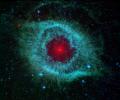
|
-
PIA09178:
-
Comets Kick up Dust in Helix Nebula
Full Resolution:
TIFF
(45.69 MB)
JPEG
(1.944 MB)
|

|
2007-01-26 |
|
Spitzer Space Telescope
|
IRAC
|
720x720x3 |
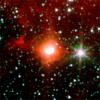
|
-
PIA09119:
-
Luminous Blue Variable: Destined To Be a Supernova?
Full Resolution:
TIFF
(1.557 MB)
JPEG
(53.65 kB)
|

|
2007-01-26 |
|
Spitzer Space Telescope
|
|
3200x2400x3 |
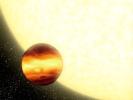
|
-
PIA09118:
-
Forecasting Weather on Distant Worlds (Artist Concept)
Full Resolution:
TIFF
(23.04 MB)
JPEG
(277.9 kB)
|

|
2007-01-26 |
|
Spitzer Space Telescope
|
|
3000x2400x3 |
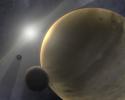
|
-
PIA09117:
-
Gas Giants Form Quickly (Artist Concept)
Full Resolution:
TIFF
(21.6 MB)
JPEG
(205.5 kB)
|

|
2007-01-16 |
|
Galaxy Evolution Explorer (GALEX)
Spitzer Space Telescope
|
IRAC
|
975x700x3 |
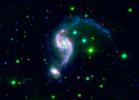
|
-
PIA09106:
-
Older Galaxy Pair Has Surprisingly Youthful Glow
Full Resolution:
TIFF
(2.051 MB)
JPEG
(55.51 kB)
|

|
2007-01-09 |
|
Hubble Space Telescope
Spitzer Space Telescope
|
IRAC
Multiband Imaging Photometer (MIPS)
|
2394x2571x3 |

|
-
PIA09109:
-
Unwrapping the Pillars
Full Resolution:
TIFF
(18.49 MB)
JPEG
(578.7 kB)
|

|
2007-01-09 |
|
Spitzer Space Telescope
|
IRAC
Multiband Imaging Photometer (MIPS)
|
2100x2400x3 |

|
-
PIA09108:
-
Eagle Nebula Flaunts its Infrared Feathers
Full Resolution:
TIFF
(15.14 MB)
JPEG
(1.048 MB)
|

|
2007-01-09 |
|
Hubble Space Telescope
Spitzer Space Telescope
|
IRAC
Multiband Imaging Photometer (MIPS)
|
2100x2400x3 |

|
-
PIA09107:
-
Cosmic Epic Unfolds in Infrared
Full Resolution:
TIFF
(15.14 MB)
JPEG
(890.6 kB)
|

|
2006-12-18 |
|
Spitzer Space Telescope
|
IRAC
|
2430x1525x3 |
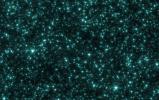
|
-
PIA09100:
-
The Universe's First Fireworks
Full Resolution:
TIFF
(11.13 MB)
JPEG
(405.3 kB)
|

 Planetary Data System
Planetary Data System




















































































































